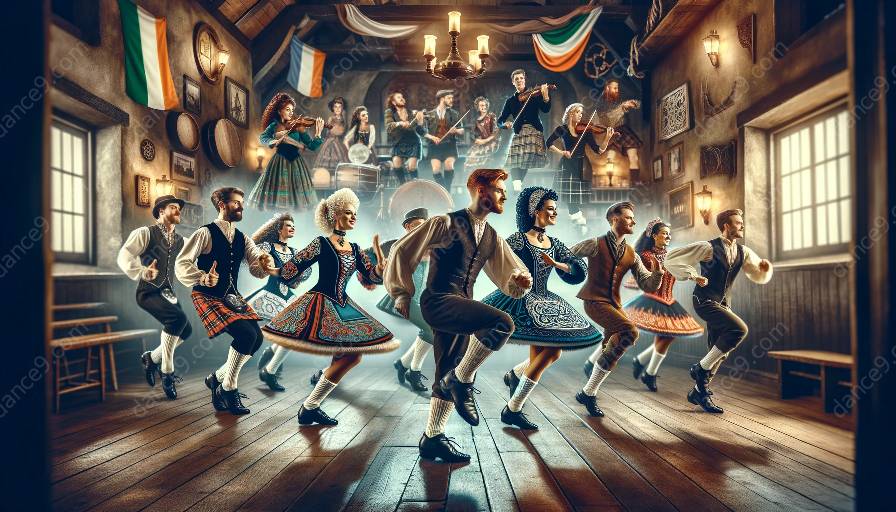Irish dance has a rich tradition steeped in culture and history, and this is beautifully reflected in the traditional costumes worn during performances. These costumes are an integral part of the Irish dance experience, adding elegance, grace, and authenticity to the dancers' movements. In this article, we will delve into the fascinating world of traditional Irish dance costumes, exploring their unique elements and significance in the context of Irish dance and dance classes.
The History of Irish Dance Costumes
The history of Irish dance costumes dates back to the early days of traditional Irish dance. Originally, Irish dancers wore everyday clothing, reflecting the simplicity and practicality of their attire. As the art form evolved and gained popularity, costumes became more elaborate and symbolic, representing different aspects of Irish culture and traditions.
Key Elements of Irish Dance Costumes
Irish dance costumes are characterized by their vibrant colors, intricate designs, and meticulous details. Dresses for female dancers often feature a fitted bodice, full skirt, and decorative embellishments such as lace, embroidery, and sequins. The use of traditional Celtic symbols, such as the Trinity knot, adds a touch of symbolism and heritage to the costume.
Male dancers typically wear tailored suits or kilts, accompanied by accessories like vests, shirts, and ties. The attire is adorned with Celtic-inspired patterns and colors that reflect the rich history of Ireland. Both male and female dancers often don traditional Irish dance shoes, such as the iconic hard shoes and soft shoes, which are integral to the overall costume.
Significance of Costumes in Irish Dance Performances
Irish dance costumes hold deep significance within the context of performances. They serve as visual representations of Irish culture and heritage, connecting dancers to their roots and traditions. The costumes add an element of grandeur to the performances, enhancing the dancers' movements and creating a captivating spectacle for the audience.
Moreover, these costumes contribute to the storytelling aspect of Irish dance, as they often reflect themes from Irish folklore, mythology, and history. Each costume is a work of art that conveys the unique narrative of the dance, enriching the overall performance and creating a mesmerizing experience for the spectators.
Incorporating Costumes in Irish Dance Classes
For aspiring Irish dancers, the costumes play a significant role in their training and development. Dance classes often emphasize the importance of proper costume etiquette and presentation, teaching students how to carry themselves with grace and poise while wearing traditional Irish dance attire.
Additionally, understanding the cultural significance of costumes enhances students' appreciation for the art form and instills a sense of pride in their heritage. Through the incorporation of traditional costumes in dance classes, students not only learn the technical aspects of Irish dance but also immerse themselves in the rich tapestry of Irish culture.
Conclusion
Traditional costumes are an essential part of Irish dance performances, reflecting the beauty, grace, and history of this captivating art form. From their intricate designs to their cultural significance, Irish dance costumes serve as powerful symbols that enrich the overall experience for dancers and audiences alike. By honoring tradition and embracing the heritage of Irish dance through these magnificent costumes, the art form continues to thrive and inspire generations of dancers around the world.













































































